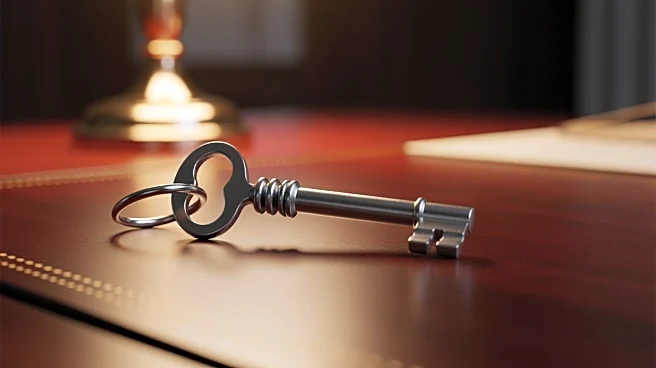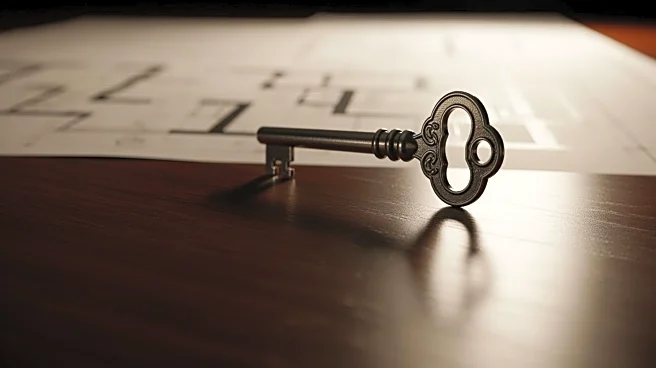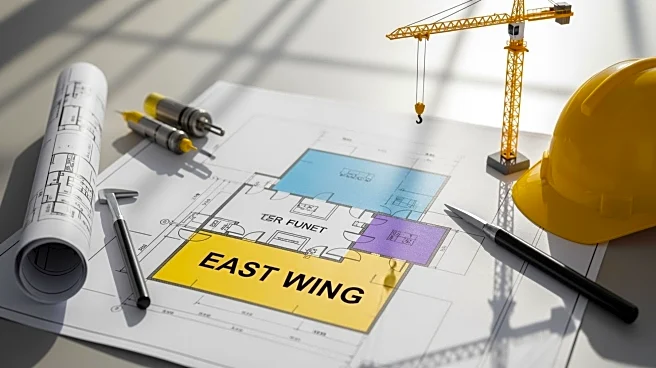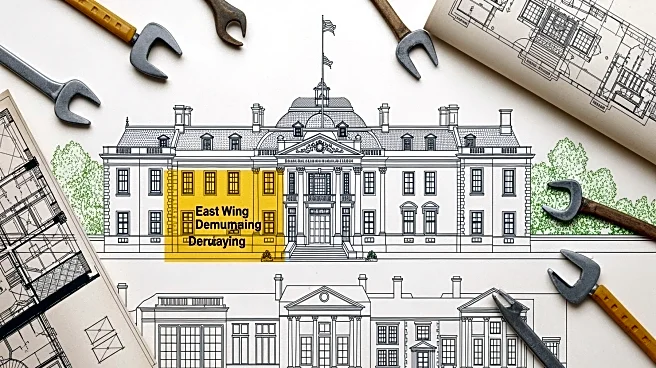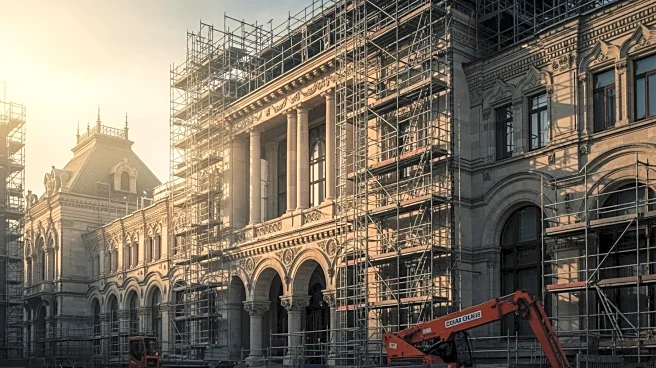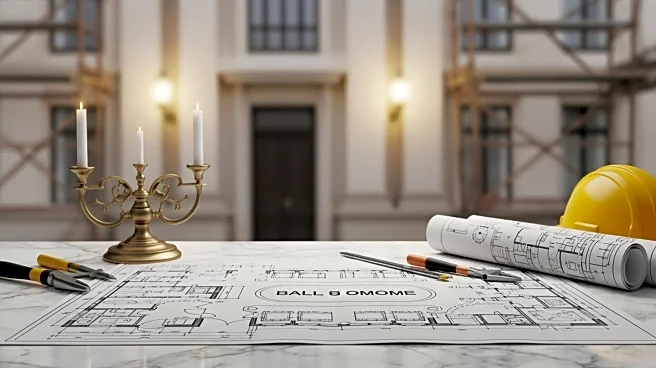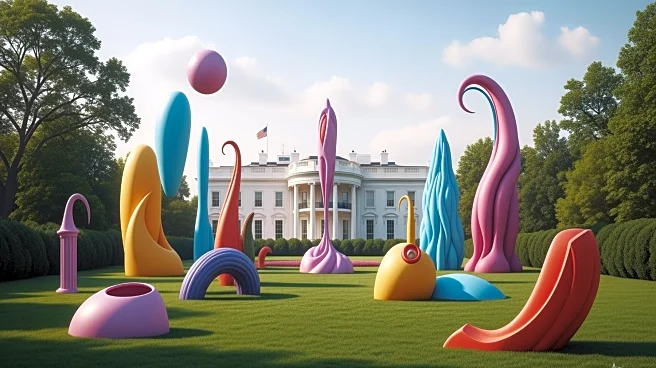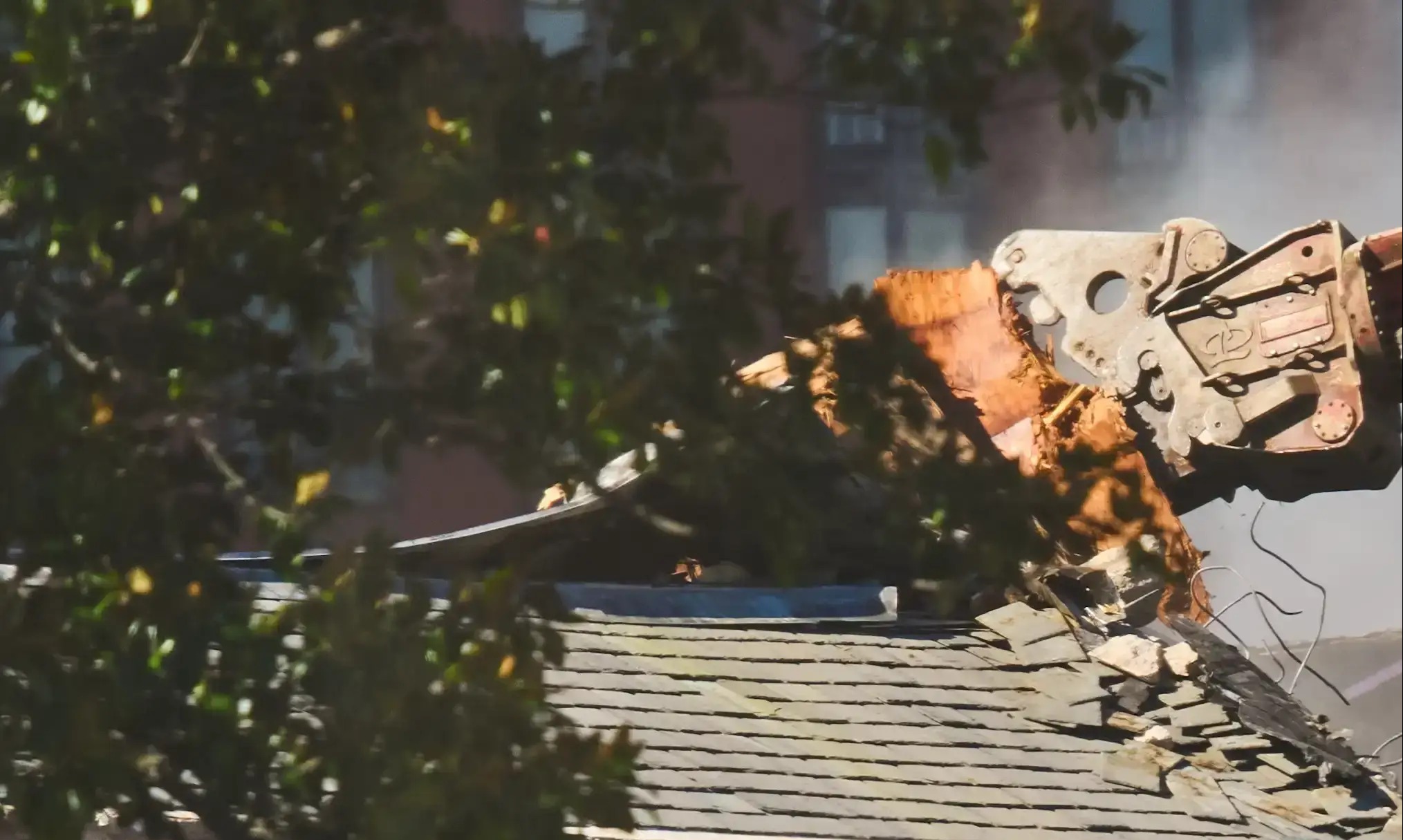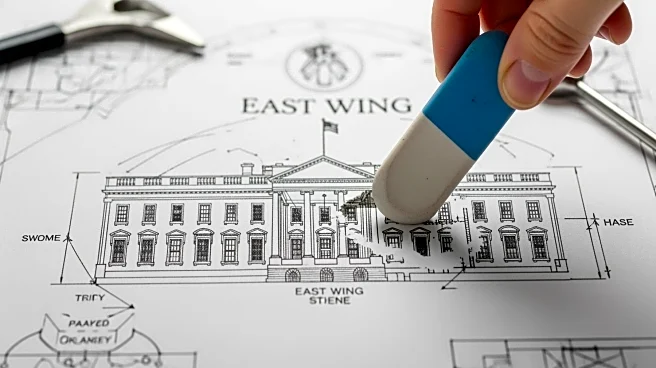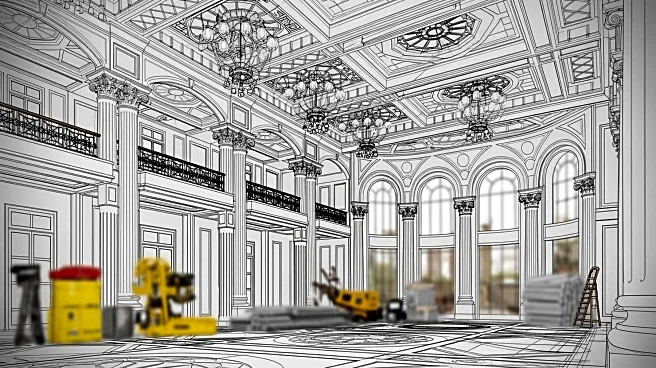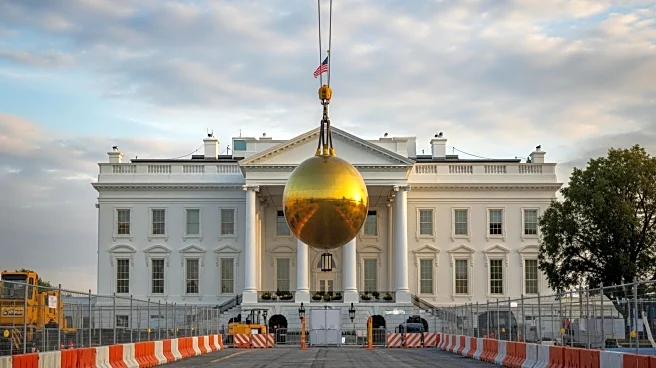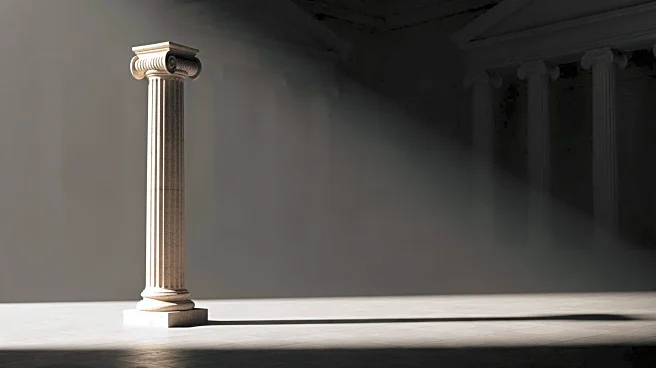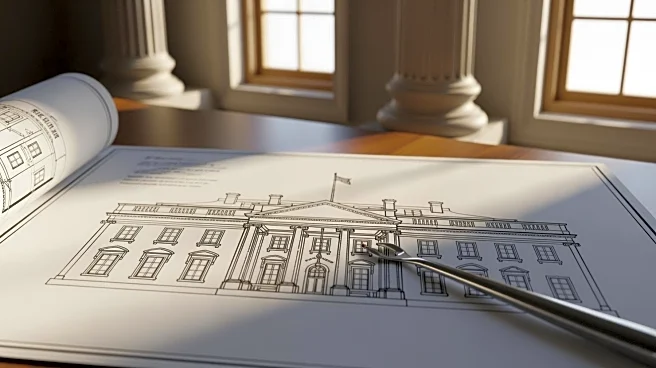What's Happening?
The White House has undergone numerous renovations throughout its history, each met with varying degrees of controversy. The latest project involves the demolition of the East Wing to make way for a new ballroom, a decision made by President Trump. This
follows a long tradition of changes to the White House, including President Truman's significant overhaul in the mid-20th century and President Jefferson's addition of colonnades in the early 1800s. Each renovation reflects the personal tastes of the presidents and the evolving needs of the federal government.
Why It's Important?
The ongoing renovations at the White House highlight the tension between preserving historical integrity and meeting modern functional needs. The White House serves as both a symbol of American history and a working government building, necessitating updates to accommodate contemporary requirements. The decision to demolish the East Wing for a new ballroom has sparked debate about the preservation of historical architecture versus the practical needs of hosting large events. This reflects broader societal discussions about how to balance historical preservation with modernization.
Beyond the Headlines
The renovations at the White House also raise questions about the role of private funding in public projects. President Trump's decision to use private donations for the ballroom construction may influence future funding strategies for government building projects. Additionally, the changes to the White House could impact its cultural significance, as each renovation alters the historical narrative of the building. The project may also prompt discussions about the ethical considerations of altering a national landmark.
